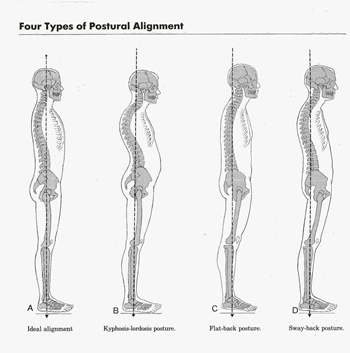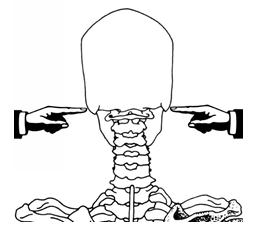While researching easier pose versions of Yogatic’s New Year “Sun Salutation Challenge”, I was struggling to remember to maintain good posture. As with sitting at my desk, it is important to have proper alignment during the poses. Doing the poses is yoga “practice”. For the “Sun Salutation” Challenge see my post from January 1st.
Since starting my blog a couple of weeks ago I had intended to re-start the Namaste Yoga tv show series. Instead I have only done simple stretching mostly in bed. That’s better than nothing, right? I have also practiced feeling how to stand and sit more in skeletal alignment, which has me stretching upwards and tilting my hips and wiggling around. I found my DVDs, but hadn’t used the DVD player in so long that had trouble finding the control. Surprised me when I opened the player to find that there was a Namaste yoga DVD ready to go. How long was that DVD sitting in the player as a thought intention to re-start doing the exercises? My vacuüm is on the fritz preventing proper cleaning of the carpet of the planned exercise area in the den. After reading about yoga, was time to actually DO some official yoga. No more delays, so just laid down a sheet over the carpet. In my PJs before bedtime I intended to finally do some yoga without one more day passing. Surely gentle stretching would be relaxing before sleep.
It was a real eye opener at how stiff that I have become. The warm-up was just barely doable.
This is a clip they have on-line of part of a warm-up series.
Last time I followed the series was probably 4 years ago when I was 25 pounds lighter. My body is much stiffer now. Even “Child’s pose” wasn’t comfortable. My fatter belly blocked bending down and my “caboose” stuck up in the air. My right knee hurt not letting me settle back on my heels.
The standing stretching arms up over head and bending over while deep breathing is a resting period between the poses. My arms got tired. I had to take a break from the ‘rest’. I stopped to watch the serene faces and graceful bodies moving on the tv, as if effortlessly. Wow… I want to be more like those lithe young women. That will take yoga “practice”.
My muscles trembled standing in ‘Warrior Pose’. I wobbled and fell over attempting one-leg balances and held onto a chair. I didn’t try to complete the full set of poses, then finished with the session’s cool-down. The cool-down wasn’t easy either.
Standing and bending over was the easiest exercise, which probably comes from all the times bending with my scoop shovel by the wheelbarrow to clean up horse poop. Picking out horse hooves is also good bending and squatting practice.
The yoga was a work-out. Afterwards I felt unhappy muscles that I’d forgotten that I even had in my body. These weren’t the muscles used in poop scooping. I took an Ibuprofen and climbed into bed putting a warm heating pad on my upper back. Next morning my left elbow had a sore spot. BUT…in other ways I felt more stretched out and found it a bit easier to sit up in my desk chair. I felt taller. Of course… I still find myself slumping. I’m amazed how often, without realizing, I end up in an awful slouching posture.
I remember that 4 years ago couldn’t do an entire set on the first day of doing the Namaste DVD. It also took time to improve my balance. In my researching easier yoga practice discovered there are programs for doing yoga and even aerobics sitting in chairs. Even on my less optimal health days there will be no excuses to not get in some stretching and exercise. Even a small stretch will help improve my flexibility.
What’s coming up next in my blog:
- Will include various yoga videos and poses for my personal slowed down “Sun Salutation” challenge. You are welcome to follow along and even join in. Might take me several months of “practice”, but my goal is to actually manage the 10 Sun Salutations with some actual grace.





